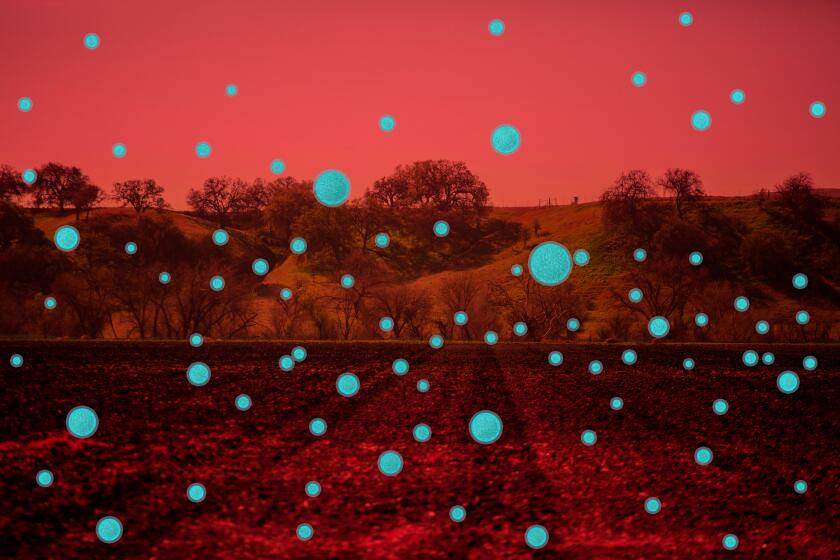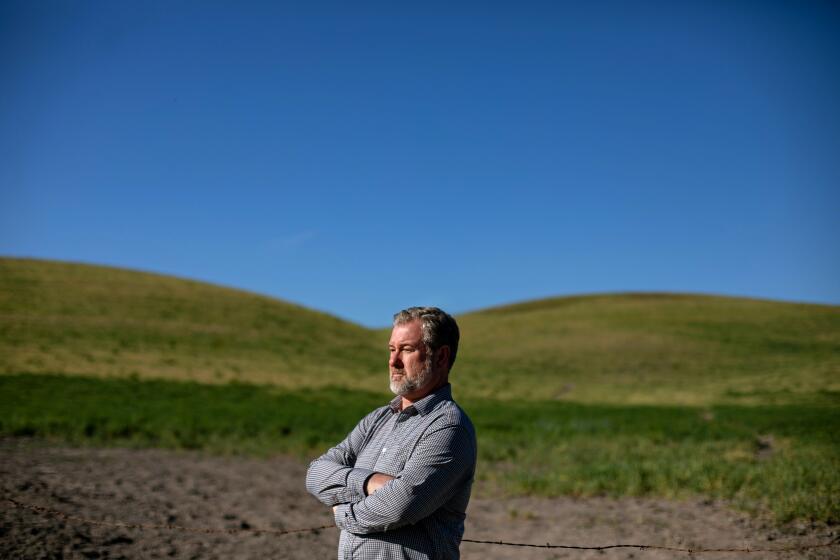Valley fever cases surge in California, already way up from recent years

- Share via
Valley fever cases are skyrocketing in California, with this year’s tally already far exceeding the number recorded in all of 2023 and set to climb even higher once figures from the typically active month of December are reported.
As of the end of November, 11,076 valley fever cases had been confirmed statewide, a 20% increase compared to last year’s total and a nearly 47% jump from 2022, according to state health data.
Valley fever is caused by inhaling spores of coccidioides, a fungal pathogen that thrives in the drier and dustier regions of the state. The fungus is released when the dry soil where it grows is disturbed.
Kern County has long been a hot spot for the disease and fungus, and this year is no different. The county accounts for 3,768, or just over one-third, of reported cases.
While several counties have seen relatively modest growth in case numbers through November compared with what was reported over the same time frame in 2022, including Los Angeles and Riverside, a few have increased by 100% to 200% — including Fresno, Kings, Merced, San Francisco, San Joaquin, San Luis Obispo, Santa Barbara and Stanislaus.
As the range and incidence of valley fever grows, public health officials are struggling to warn visitors of the risk.
The largest jump occurred in Monterey County, where case counts tripled, from 100 as of Nov. 30, 2022, to 299 by the same time in 2024.
Experts say the rise in cases — and the geographic spread of the fungus — is likely the result of a combination of several factors, including a series of wet winters on top of a historic drought, a changing climate, shifting demographics and increased construction in areas once left to coyotes, desert rodents and cacti.
Most people who are infected by the fungus will not experience symptoms; their bodies will fight off the infection naturally. But in some cases, the fungal spores can cause life-altering damage or death.
The disease can be especially problematic for people who live outside the fungus’ region of endemism, because the early stages often resemble the onset of COVID-19 or the flu. Physicians who are not familiar with the disease may misdiagnose these patients or fail to consider it.
That’s what happened to several concertgoers in May who camped out at the Lightning in a Bottle music and art festival, held at Kern County’s Buena Vista Lake. Among them was San Francisco artist Nora Bruhn, who returned home with what she assumed was a cold. But over the following weeks, her symptoms worsened and intensified.
It was only when her brother, an emergency room physician, suggested she might have valley fever that she was finally diagnosed and started on an antifungal regimen.
Bouts of extreme precipitation, along with worsening drought and heat, are creating more of the dangerous dust, experts say.
For others, the delay of treatment can be deadly — allowing the fungus to spread and grow in the lungs and occasionally the brain.
Outside of California, valley fever is also prevalent in Arizona and some areas of Nevada, New Mexico, Utah and Texas, as well as parts of Mexico and Central and South America.









